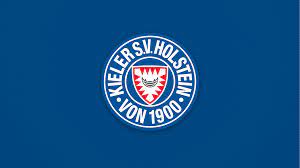Holstein Kiel FC is an esteemed football club rooted in the northern region of Germany, renowned for its passionate fan base, strategic gameplay, and rich history. Known affectionately among supporters as simply “Kiel,” this club has carved out a notable presence in German football. The journey of Holstein Kiel FC reflects resilience, tactical evolution, and community spirit, making it a fascinating subject for football enthusiasts and sports historians alike https://bet88tl.com/.
This comprehensive article delves into the intricate details of Holstein Kiel FC, exploring its history, tactical approach, key players, club culture, recent performances, and future prospects. Whether you’re a seasoned supporter or a casual observer, this deep dive offers valuable insights into what makes Holstein Kiel FC a standout entity in German football.
Historical Evolution of Holstein Kiel FC
Understanding the roots and development trajectory of Holstein Kiel FC is essential to appreciating the club’s current stature. Founded over a century ago, the club’s history is intertwined with regional identity, socio-economic changes, and footballing innovations that have shaped its path.
Origins and Early Years (Early 20th Century)
The origins of Holstein Kiel FC date back to the early 1900s, emerging from local football clubs seeking to formalize their operations. Initially, the club participated in regional competitions, often struggling against more established teams from larger cities like Hamburg and Bremen. Despite these challenges, Kiel’s community embraced the club, fostering a grassroots movement that emphasized local pride and sporting excellence.
During the interwar period, Holstein Kiel FC began to develop its infrastructure, including establishing youth programs and securing dedicated grounds. These foundational steps laid the groundwork for future success and stability. The club’s early years were marked by sporadic successes in regional leagues, but it was clear that Kiel aspired to greater heights beyond local borders.
Post-War Resurgence and Rise Through Divisions (Mid 20th Century)
After World War II, German football underwent significant restructuring, influencing Holstein Kiel FC‘s trajectory. The club restructured its management and rejoined competitive leagues, initially competing in lower divisions. The 1950s and 1960s saw Kiel battling oscillations between divisions, experiencing both promotions and relegations.
A notable turning point was the club’s promotion to the second tier in the late 1970s, which marked its emergence on a broader stage. This period also witnessed the rise of local talents who would become club legends. Kiel’s strategic recruitment and emphasis on youth development played pivotal roles during these decades, helping stabilize the club’s position.
Modern Era: Establishment in the 2. Bundesliga and Beyond
In the 21st century, Holstein Kiel FC has solidified its reputation within the 2. Bundesliga, consistently competing for promotion to the Bundesliga. The club adopted a philosophy centered around disciplined tactics, nurturing young talent, and creating a cohesive team ethos.
